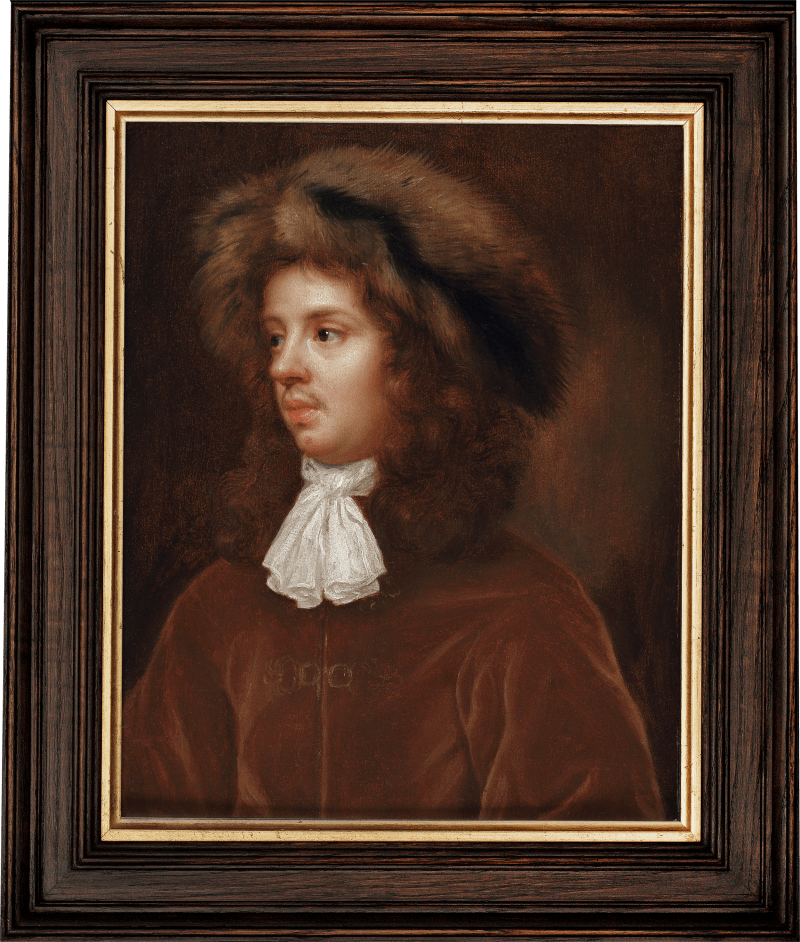Portrayed in fashionable portrait attire of semi-classical guise, Lady Margaret Style (née Twisden) is dressed in a white chemise, dark dress and a vibrant draped blue fabric enhanced with gold fringe that appears in several other portraits by Beale. This composition typifies Beale’s works done ‘for profit’ – as opposed to her works done ‘for study and improvement’ – in its formal pose and dress as well as the traditional canvas size.
The sitter offers an interesting insight into Beale’s circles of patronage, which often blurred the boundaries between business and family and drew upon her expansive ties of kinship. Lady Style was the daughter of Sir Thomas Twisden (1602–1683) and Lady Jane Twisden (née Thomlison) (c. 1610–1702), who also had her portrait painted by Beale in 1677, with multiple sittings recorded throughout May and June.[1] Around the date that this work was painted, Margaret married Sir Thomas Style, 2nd Baronet of Wateringbury. The Twisden family were distantly related...
Portrayed in fashionable portrait attire of semi-classical guise, Lady Margaret Style (née Twisden) is dressed in a white chemise, dark dress and a vibrant draped blue fabric enhanced with gold fringe that appears in several other portraits by Beale. This composition typifies Beale’s works done ‘for profit’ – as opposed to her works done ‘for study and improvement’ – in its formal pose and dress as well as the traditional canvas size.
The sitter offers an interesting insight into Beale’s circles of patronage, which often blurred the boundaries between business and family and drew upon her expansive ties of kinship. Lady Style was the daughter of Sir Thomas Twisden (1602–1683) and Lady Jane Twisden (née Thomlison) (c. 1610–1702), who also had her portrait painted by Beale in 1677, with multiple sittings recorded throughout May and June.[1] Around the date that this work was painted, Margaret married Sir Thomas Style, 2nd Baronet of Wateringbury. The Twisden family were distantly related to both the Cradocks and the Beales, and it is interesting to note that multiple members of the Twisden family commissioned portraits from Beale. The Beales’ familial ties remained a vital component of their circles of patronage and comprised some of the wealthiest and most privileged individuals in England, including the Twisdens. Unlike many male artists of her time, who could socially afford to be more brazen in their self-promotion, Beale’s strategy for building her clientele was more nuanced and organic. By painting her wealthy (albeit distant) relatives, her work found a place within the homes of some of England's most privileged families and would have been noticed by other affluent visitors. This subtle approach would have applied to other sectors of patronage too, including academic circles and members of the church.
[1] Beale, ‘Notebook 1676/7’.













